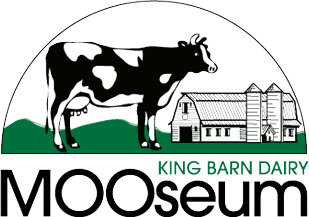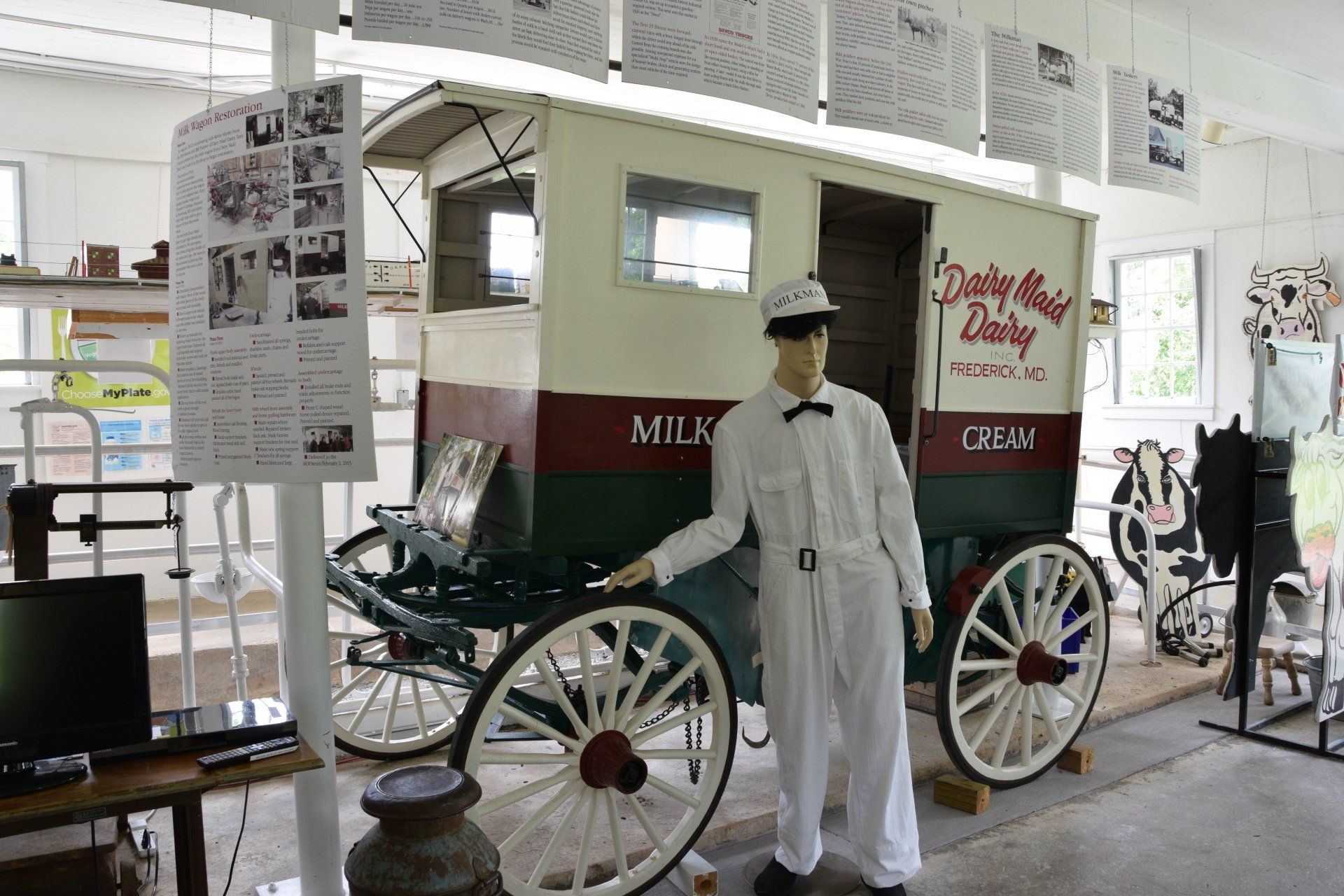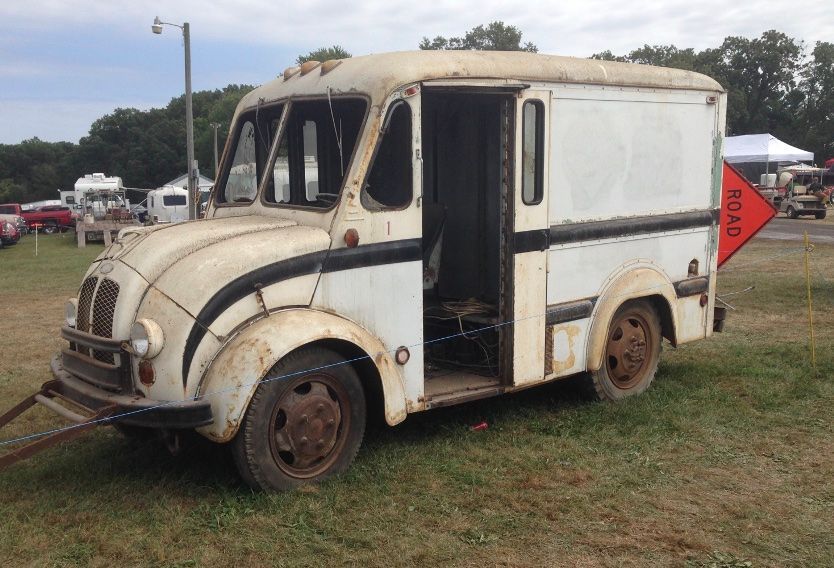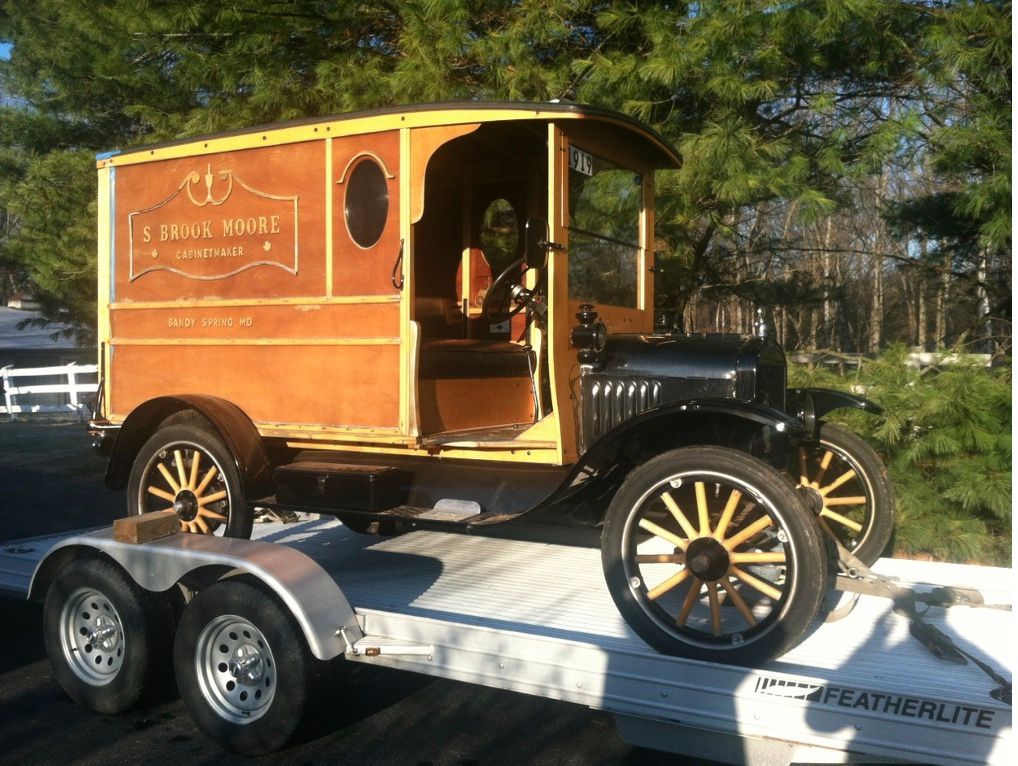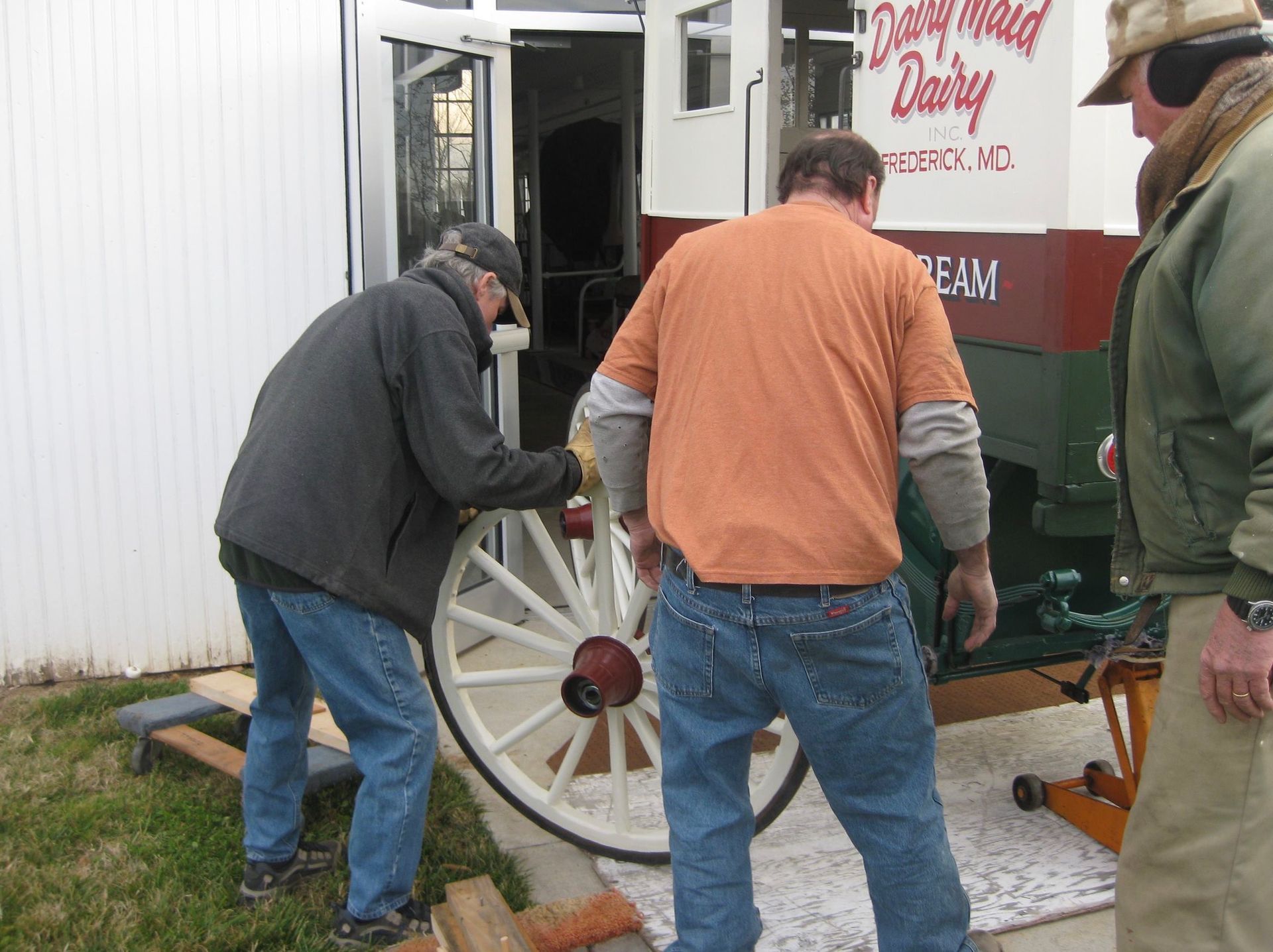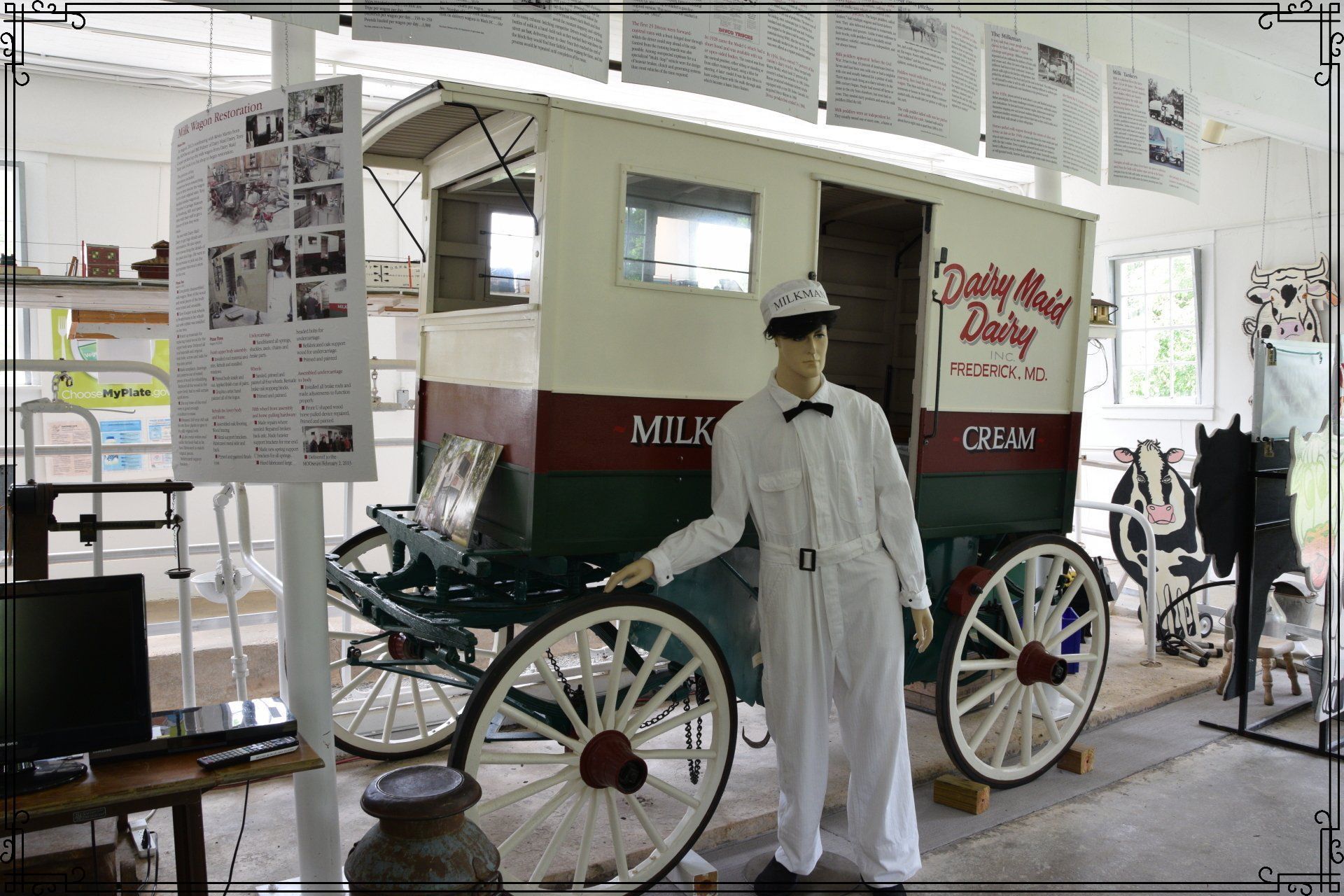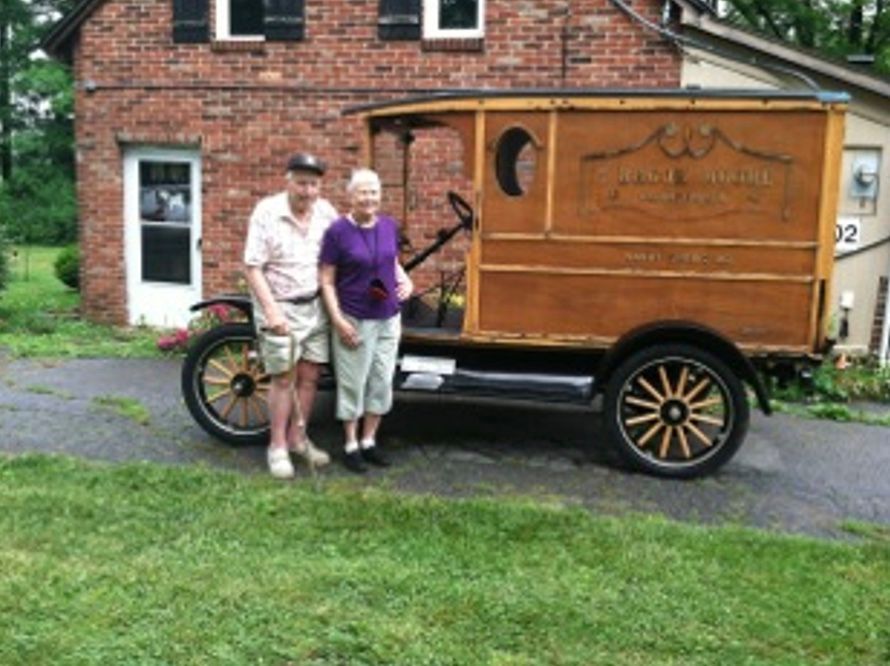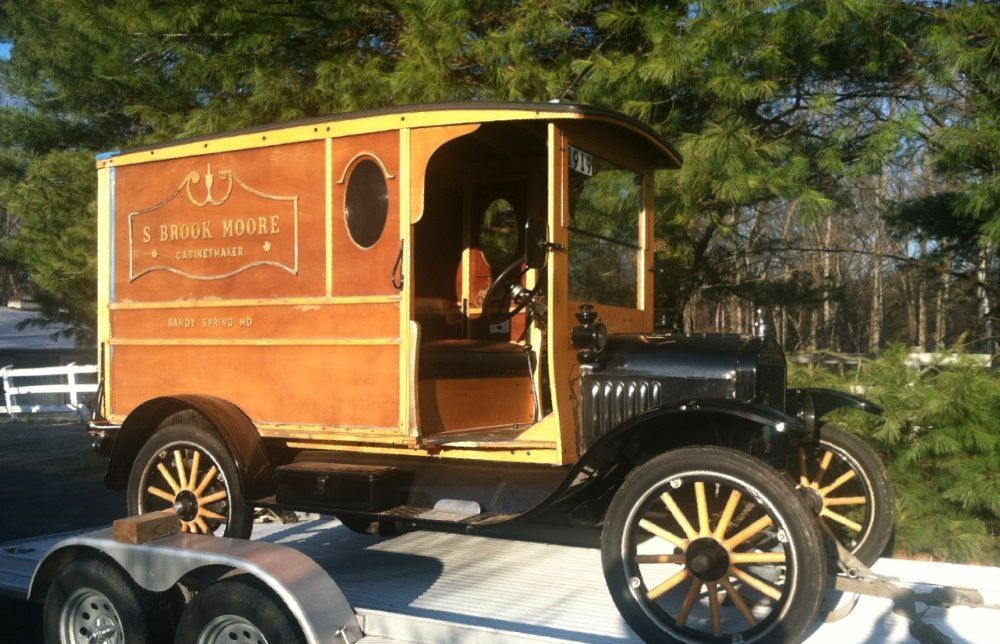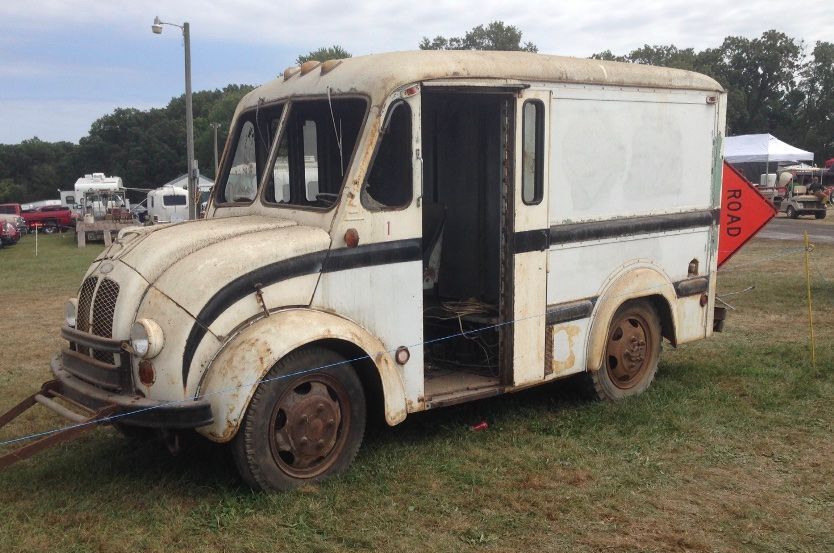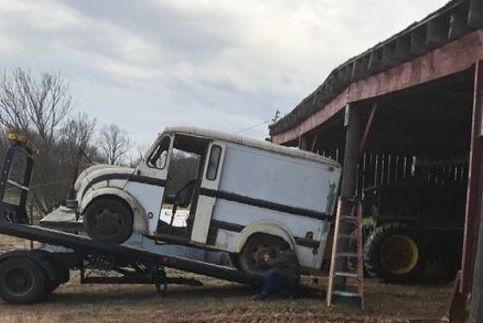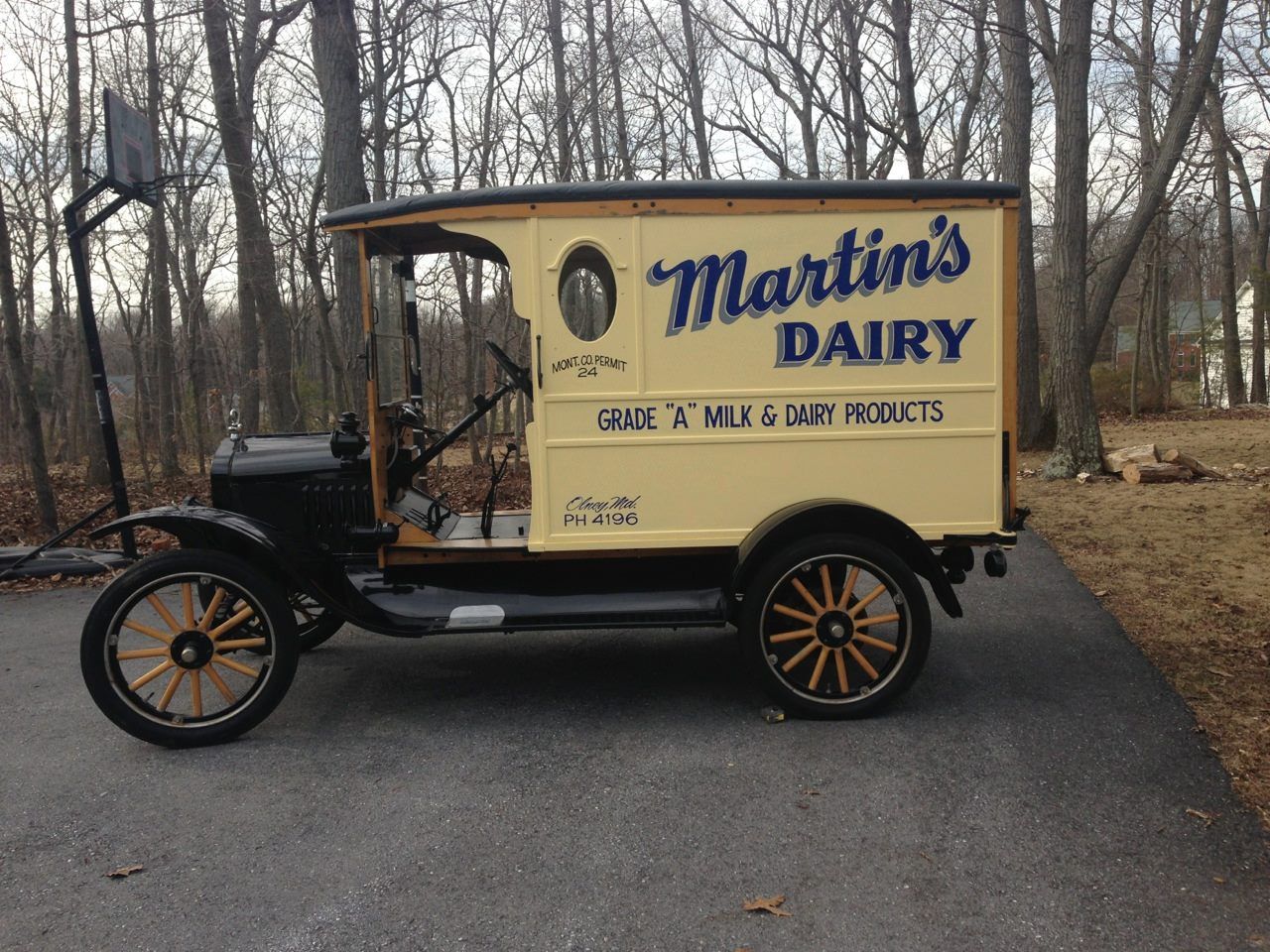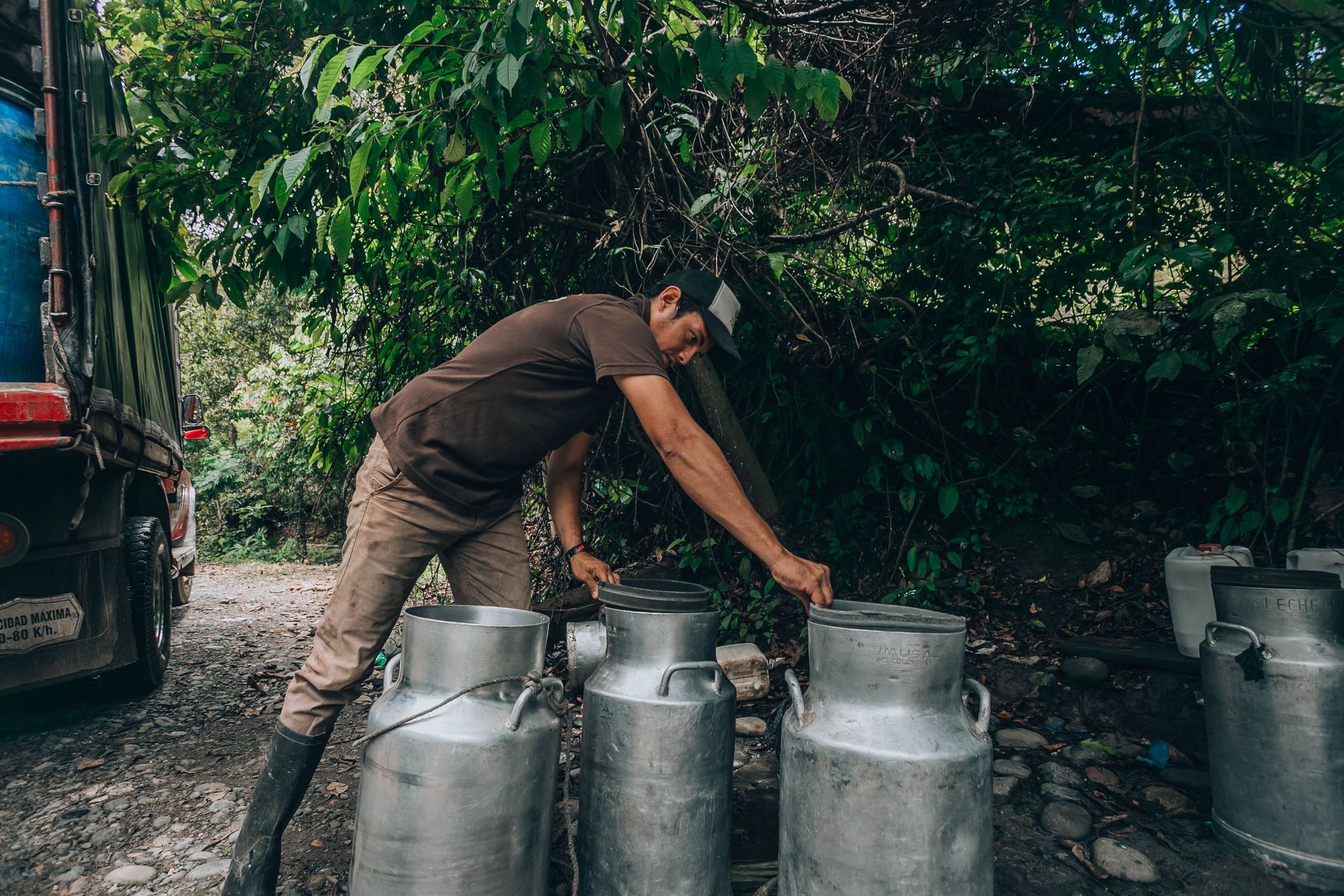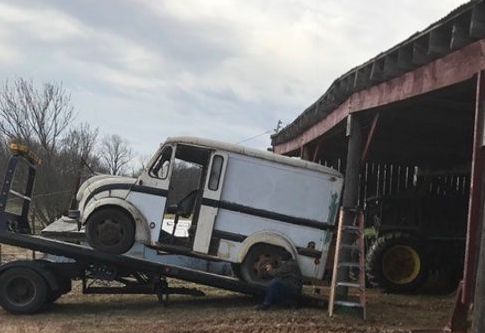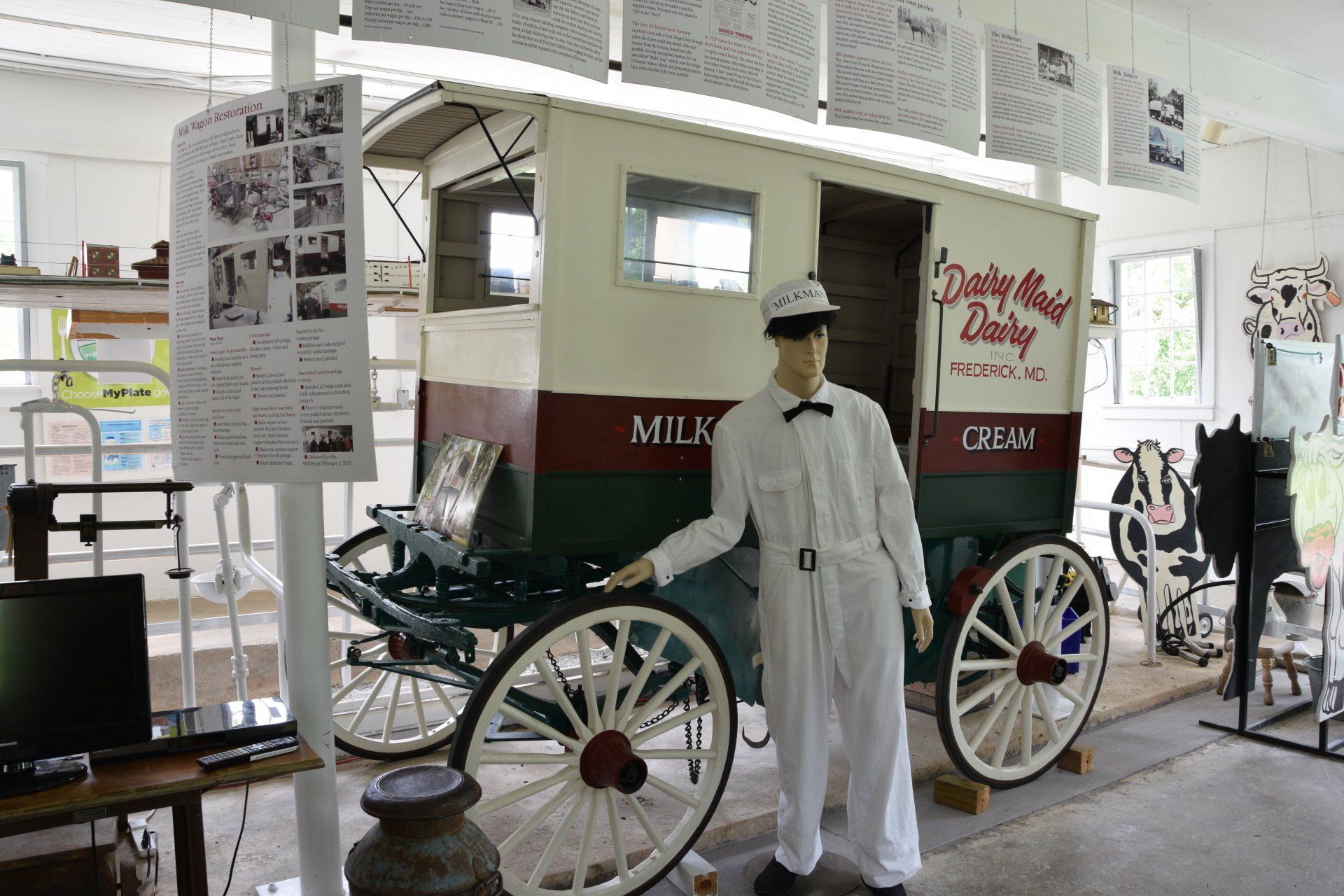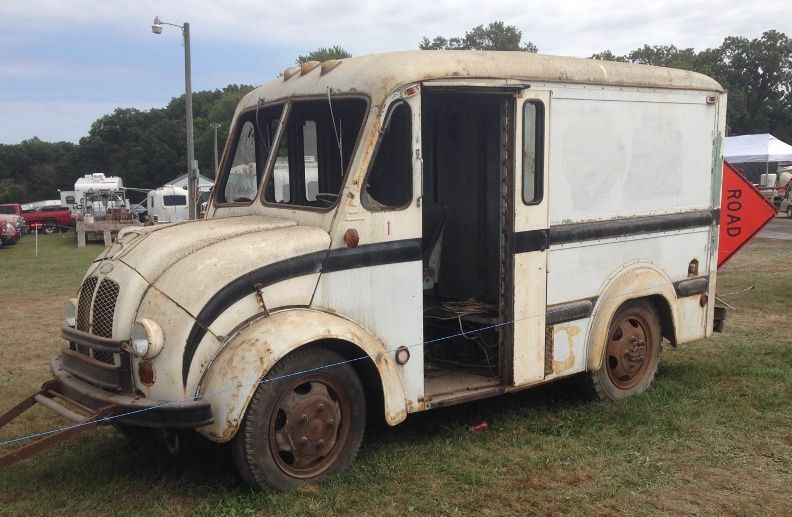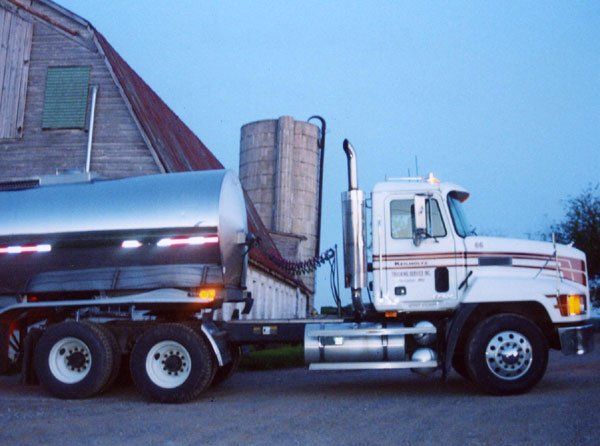In 2011 Jody Vona, owner of, Maryland’s oldest dairy – Dairy Maid Dairy (originally Excelsior Sanitary Dairy est. 1894), reached out to a colleague from the Maryland Dairy Industry Association, MOOseum Board member and dairy farmer Laurie Savage. Mr. Vona’s family had purchased an antique wooden milk wagon in the early 1950’s in Westminster, Maryland, had lent it out to organizations over the years for parades and other such events. The milk wagon was now in poor shape. He wondered if the King Barn Dairy MOOseum would like the milk wagon for an exhibit. “YES” replied Laurie, and so this historic milk wagon made its way to the MOOseum to assist with telling the story of the transportation of milk. Mr. Vona’s only stipulation to the donation was if the MOOseum ceased to exist, he wanted the milk wagon returned to the Vona family and Dairy Maid Dairy.
With a matching grant from Maryland Heritage Areas Authority, the MOOseum funded the restoration of the wagon. Heritage Montgomery also granted the MOOseun funds for a model horse so visitors would better understand how the wagon moved. Board member Kevin Martin, lead on this endeavor, began by hiring Tony Cooper of Coop’s Garage for this job. Mr. Cooper was an expert on restoring antique cars and he was up for the challenge of restoring this antique wooden milk wagon. He began with
research and what ne and MOOseum Board members found was very interesting.
Unlike the MOOseum’s other two vehicles – the 1919 Model T, build by Ford Motor Company, and the mid-century Divco milk truck built by Detroit Electric Car Company - Mr. Cooper discovered that wooden milk wagons were often refurbished from other wagons. There was no one company that created them. As families moved out to suburbs and cities in the early 1900’s, they no longer had their own cow for milk and needed their milk delivered. At this same time, automobiles were being created that operated on gas and electric.
Wooden milk wagons were on the decline as vehicles such as the 1919 Ford Model T began delivering milk. The wooden milk wagons had a renaissance in the 1940s – and early 1950s due to World War II. With automobile manufactures building weapons for the Government and gas rationed during the war, dairies turned to delivering milk again with horse drawn milk wagons, such as this one. If visiting the MOOseum, ask Board member/docent Peg Donnellon to share the story of her grandfather and uncles delivering milk in Maspeth, Queens, New York during the 1920’s-1930’s with a horse drawn milk wagon.
It was determined that the chassis of the MOOseum’s wooden milk wagon dated from post-Civil War. The wooden top and roof were in disrepair. Mr. Cooper took the wagon apart piece by piece, and reused whatever wood and metal that he could to rebuild it. When he had appropriate old wood, he would use that in the restoration.
It appeared the wheels of the wagon had sat in water causing a good deal of damage. Mr. Cooper totally restored 2 of the wheels, partially restored one and had to purchase one new wheel from Amish farmer/craftsmen. He rebuilt the body of the wagon using as much of the original pieces as he could and supplementing with new pieces when he had to. To make some of the new metal look old, he would hammer it to cause some dents! Research on colors and decals of the early Dairy Maid Dairy were used in the restoration.
The restored milk wagon was gorgeous! A space was made for its exhibit, however one issue remained: the milk wagon was higher than the doors to the King Barn. The wagon did not fit through the door! The Board briefly considered replacing the doors, however with an estimated cost of $5,000, that was not financially possible. This did make clear that once the wagon was in the barn, it would stay in the barn and not make appearances at other events.
So, how did the wagon get in the barn? Some cleaver Board members measured and realized that if the chassis was close to the ground, the wagon would fit through the doors. A dolly was made to support the wagon and keep it low to the ground, and the wheels were removed, and the wagon gently put on the dolly and moved into the barn. Then the wagon was raised, and wheels replaced. Happily, all Board members survived this operation!

